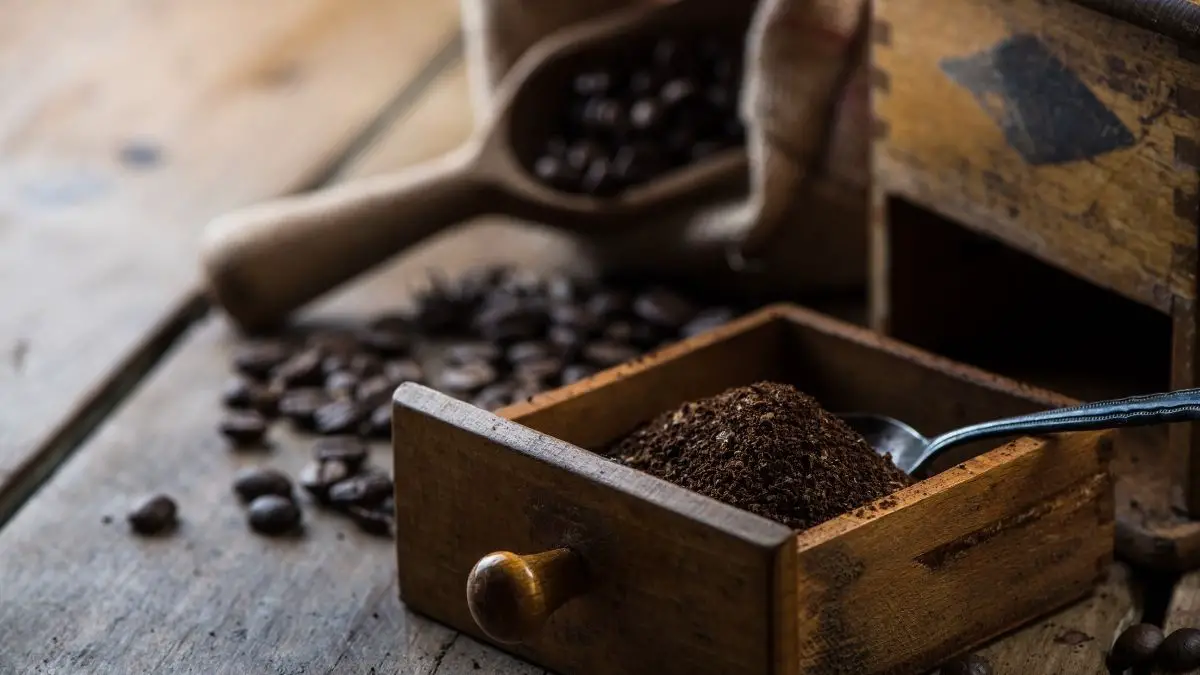When making an espresso shot, one of the first things you’ll notice is that the resulting coffee seems to change depending on how fine you grind the beans, and that’s because it does. Grind size is, in fact, the factor that has the most impact on the coffee’s flavor when brewing a cup of joe. But this begs the question, “How fine should I grind my espresso beans to achieve my desired results?”
As always, the answer to your question depends entirely on your preferences. But as a rule of thumb, the finer you grind the beans, the stronger the flavor will be, hence why espresso uses finely-ground beans.
But then again, if you’re the type to get overly creative when making a cup of joe, you’ll often feel the need to tweak with the grind size now and then. If so, you’ll need to know more than the basic rule of coffee grind sizes. For starters, you must understand how grind size affects your espresso shot.
How Does Grind Size Affect Espresso?
No matter what brewing method you use to make your cup of joe, the coffee-making process will always consist of an extraction phase wherein you press water into coffee grounds to extract its flavor.
Naturally, if the grind size is fine, the particles would be lighter or sparser, meaning water can pass through the grounds more quickly, which often results in a faster extraction of its flavor. On the other hand, if you choose a coarse grind, the particles would be denser, which means it would take more time for the water to extract flavor from the grounds, leading to a drastically slower extraction process.
That’s precisely why finely-ground coffee beans typically provide a more pungent and more flavorful espresso shot. In contrast, if you use a coarsely-ground coffee, you’ll find the result to be more lightweight.
Of course, it can go either way, depending on your preferences.
However, keep in mind that there’s always a possibility of going overboard in either the coarseness or fineness of the grind. In such cases, you’ll often deal with either of the two undesirable outcomes:
- Too coarse: When your grounds are too coarse, there’s a good chance you won’t be able to extract enough flavor out of the coffee. This is because it usually takes hours to extract flavor from coarse grounds fully. Therefore, the resulting espresso would either taste sharp, sour, or salty. Many coffee drinkers also describe the taste of under-extracted coffee to have no aftertaste whatsoever, which can be disappointing.
- Too fine: On the contrary, if your grounds are too fine, you’re more likely to over-extract the beans. This would result in your espresso shot having too much flavor, including flavors you wouldn’t want to taste on your coffee. Coffee drinkers describe the taste as either having a chemical-like bitterness and acidic tang or having no taste at all, both of which are obviously not what you’d want your coffee to taste.
If you don’t want either of these to happen, you must take your time deciding on your grind size.
4 Things To Consider When Choosing A Grind For Your Espresso
When making a cup of joe, grind size is not the only “extraction metric,” as they call it. Other factors include pressure, temperature, type of coffee bean, and time. If you want to choose a grind size for your espresso shot, you must achieve a perfect balance between these four metrics.
In that regard, let’s take a look at each of these four factors:
1. Pressure
Pressure refers to how much force you apply when pushing water through the coffee grounds.
Generally, the higher the pressure, the faster the extraction and the more flavor you extract. Meanwhile, low pressure would result in a slow extraction, and less flavor will come out from the grounds.
When making an espresso shot, the baseline is a pressure level of 9 bars.
If you want to experiment with the pressure, make sure you adjust the grind size appropriately. As a rule of thumb, the higher the pressure, the more coarse the grind size should be to prevent over-extraction.
2. Temperature
It’s a well-known fact that most compounds are soluble at higher temperatures. And that holds true to coffee grounds. In other words, much like pressure, a higher temperature means faster extraction.
Following this logic, it should go without saying that if the temperature is too high, there’s a good chance that your espresso shot would be too strong and bitter. For that reason, experts advise setting the temperature of your coffee maker from 195°F to 205°F—not too hot to avoid over-extraction, but hot enough to prevent under extraction.
But as always, if you want to tweak this metric a little, make sure you adjust the grind size in a similar fashion. To further clarify, if you increase the temperature, ensure a coarser grind size.
3. Type Of Bean
There are generally two types of coffee beans that work well with espresso shots. These are:
- Arabica: These beans are typically more flavorful and tastier as it contains twice the amount of sugar than robusta beans. It’s arguably the most commonly-used coffee bean in most brewing methods.
- Robusta: Robusta beans are perhaps the most bitter coffee bean, so you wouldn’t want to use them if you plan to choose an extra fine grind. It is, however, ideal for fine grinds as it creates a better crema than arabica.
4. Time
Finally, the last extraction metric is time.
Generally, if you choose a fine grind, you must make sure to brew your coffee in less time. In the case of espresso shots, the recommended extraction time would be around 25 to 30 seconds.
On the other hand, if you choose a coarse grind, you’d have to brew your coffee for several hours. Otherwise, you may not extract enough flavor out of the coffee grounds.
Coffee Grind Size Chart
After taking into consideration the four factors above, you’ll end up choosing from seven grind sizes. Here’s a look at what each grind size looks like and what kind of coffee they’re best for.
- Extra coarse grounds: In terms of coarseness, extra coarse is at the top of the list. This grind size is most suitable for toddy’s or cold brews, and they look pretty similar to peppercorns or broken shells. With these grounds, you’ll need to brew your coffee from eight hours to an entire day to get enough flavor.
- Coarse grounds: Coarse grounds typically have the same consistency as sea salt and are ideal for any coffee you want to brew using a French press. Despite being almost similar in grind size with extra coarse grounds, it typically only requires four minutes to extract enough flavor from coarse grounds.
- Medium-coarse grounds: This grind size is best suited for home coffee makers. These grounds look like rocky sand and require two minutes to gather enough flavor.
- Medium grounds: Medium grounds are the most common grind size and work well with many brewing methods. This grind size has the same consistency as peat moss and works well with pour-over coffee.
- Medium-fine grounds: A medium-fine grind size is most suitable for AeroPress coffee makers. It looks identical to beach sand and is an excellent choice if you want to test new ways to brew coffee.
- Fine grounds: This is the perfect grind size for your espresso shot. Of course, you can be flexible with how fine you want your grounds, but it should look roughly the same as iodized salt in terms of consistency.
- Extra fine grounds: Extra fine grounds rarely work with any type of coffee, but they should work perfectly for Turkish coffee. These grounds usually look similar to powdered or confectionary sugar.
| GRIND SIZE | APPEARANCE | BEST FOR |
|---|---|---|
| Extra Fine | Powdered sugar | Turkish coffee |
| Fine | Iodized salt | Espresso shots |
| Medium Fine | Beach sand | Aeropress |
| Medium | Peat moss | Pour-over coffee |
| Medium Coarse | Rocky sand | Home coffee makers |
| Coarse | Sea salt | French press |
| Extra Coarse | Broken shells | Cold-brew |
In conclusion, the best grind size for espresso shots would be fine. But as stated earlier, you can always adjust how fine you grind your coffee beans, but make sure you don’t go overboard.
Pre-Ground Vs. Fresh Ground
As always, fresh is always objectively better. The same applies to when you make a cup of coffee.
Apart from providing your espresso shot a drastically better taste and aroma, you also have full control over how to find you grind the coffee beans since you’ll be doing it by yourself on the spot.
Meanwhile, if you choose pre-ground coffee, you won’t know how long it has been sitting on a shelf.
Now you might be wondering, “How can I grind my espresso coffee beans?“
Blade Grinder Vs. Burr Grinder
When it comes to the actual grinding of coffee beans, there are several ways to do it. You can either use a blade grinder or a burr grinder. However, experts advise against using a blade grinder.
This is because, more often than not, a blade grinder is incapable of grinding beans in a uniform size.
Therefore, while a portion of the beans may be fine, others would be coarse. Since you’d want all the grounds to have the same consistency, a burr grinder is better as it gives you more control over the size.
Wrapping Up
With this, you should now be able to choose a grind size for your espresso shots more accurately. In fact, it should be fine even if you decide to experiment with the grind size. As long as you achieve a balance between the pressure, time, temperature, and bean type, you should be able to achieve a desirable outcome, even if it isn’t perfect. But if you don’t have a grinder, keep in mind that you can use many other tools to grind the coffee, such as a blender, pestle, or hammer.

